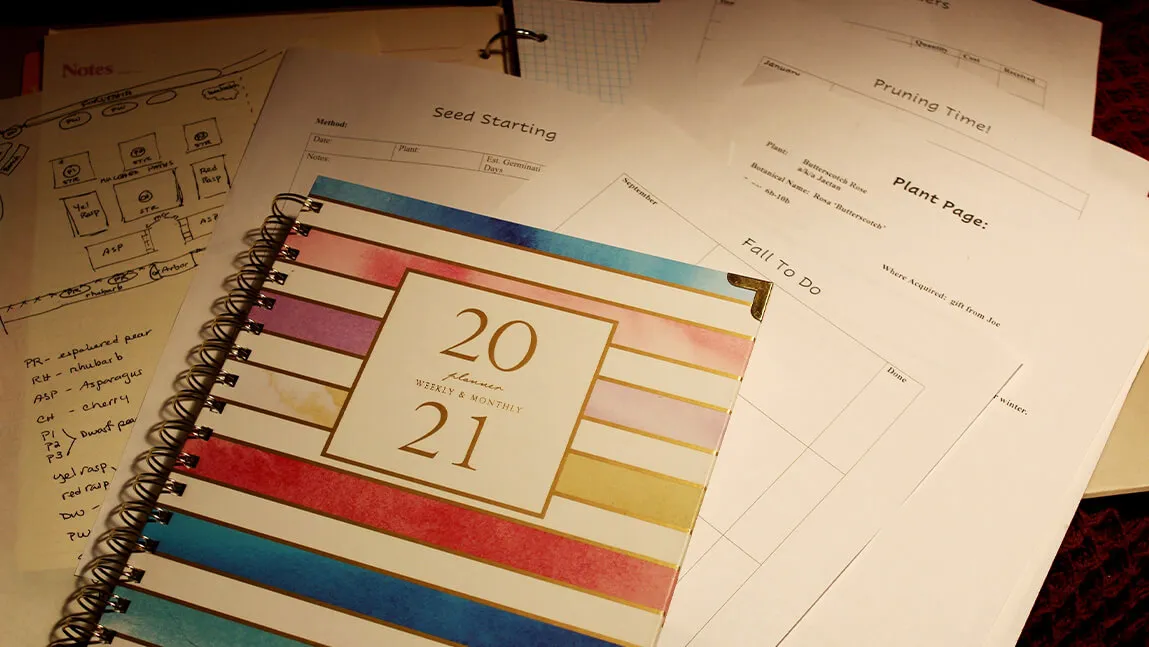By Deborah J. Benoit
Extension Master Gardener
University of Vermont
As this year's gardening season draws to a close, unlike shovels, rakes and trowels, a garden journal is a tool you can start using now. Whether you're new to gardening or a seasoned veteran, a garden journal is a great way to organize all the information you've collected related to your garden. And fall just might be the best time to begin.
A garden journal is an invaluable resource for planning over the long winter months. In it you can capture details that are fresh in mind today but may not be by the time spring arrives and questions pop up. For example, if you ordered bulk mulch this year, next year it would be helpful to know how much you ordered and if it was the correct amount needed.
As you put your garden to bed, take a good look around. Ideas that occur to you while working in the garden this year may fade by next spring. Jot them down.
Is there a bed you want to expand or plants that should be replaced in the spring? Make a note. Is there a shrub that would be happier after pruning? Check when the best time to prune that plant will be and mark it on the calendar.
Is there something you'd like to spend some time researching now that the physical demands of the garden are winding down? Add it to your winter to-do list.
Renovations or a new project might come to mind. Make some sketches. Write down what you envision. Take measurements if needed.
Don't forget to include your successes (and those not-successes). Celebrate what worked and make note of what needs to be changed. All this information will be useful as you plan for next season over the coming months. You also can use a garden journal to record pest and disease outbreaks, so you can be prepared next year before any damage starts.
A garden journal can be a beautiful bound book of blank pages to fill with anything related to your garden. Or it could be as simple as a monthly wall calendar to record garden-related dates, such as anticipated and actual first and last frost and freeze dates, or unusual weather, such as prolonged rain or drought and planting and harvesting dates.
An easy way to start is with a three-ring binder you can customize to your own needs. It is the perfect place to help organize your previous soil test results and track the results of any soil amendments you have added. Including a monthly calendar makes tracking relevant dates easy.
Templates for specialized pages are available online. Or you can easily make your own using a word processing program. Pages to track online orders, seed-starting specifics, plants acquired and seasonal or monthly tasks, as well as challenges and how they are handled, are all good sections to include.
An assortment of blank pages (plain, ruled, dot grid, graph) are handy for taking notes or sketching design ideas. Plastic pockets in a variety of sizes can hold packing slips for mail-ordered plants, plant tags or seed packets, all for easy reference. A set of dividers makes locating and retrieving information easy.
Whether you choose to go for the basics or a customized catchall, paper or even an electronic version, the most important thing to remember about creating your garden journal is to make it all about what will work best for you.
Deborah J. Benoit is a UVM Extension Master Gardener from North Adams, Massachusetts, who is part of Vermont's Bennington County Chapter.
